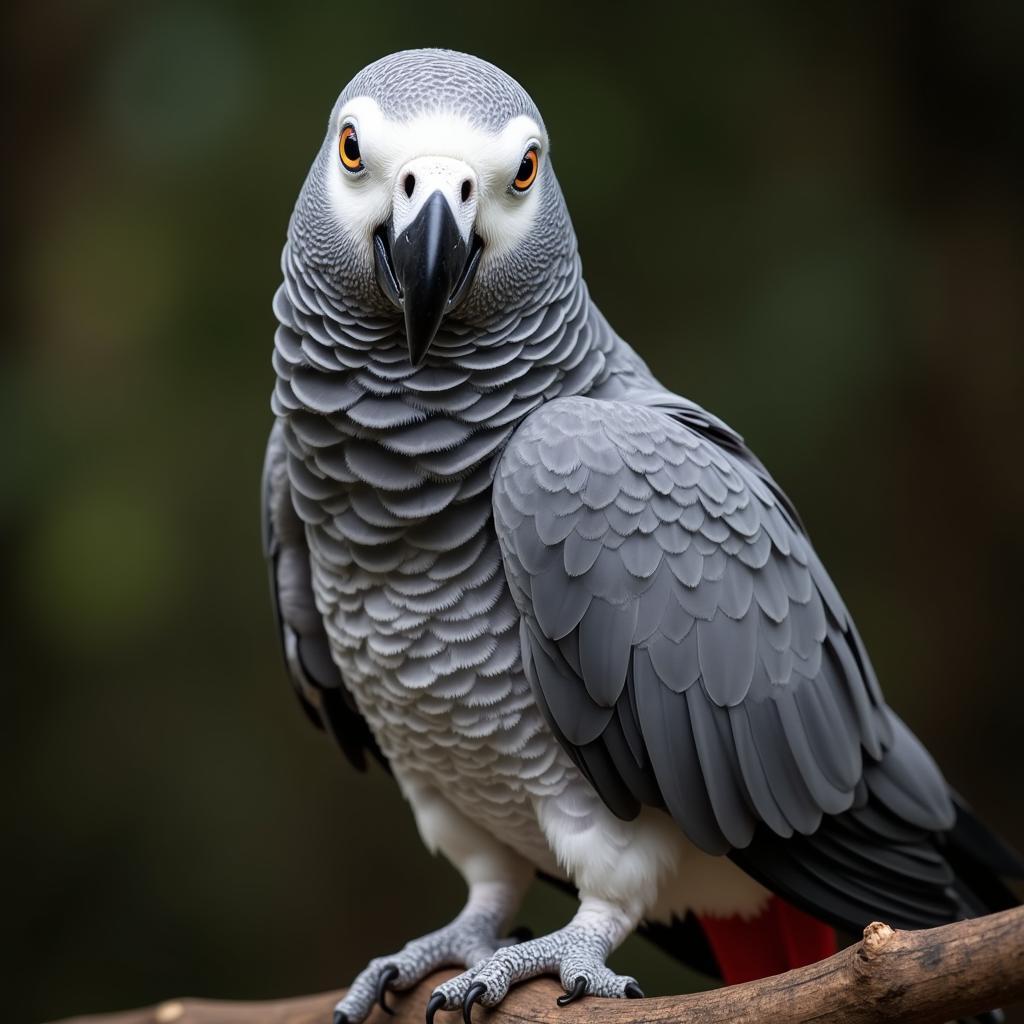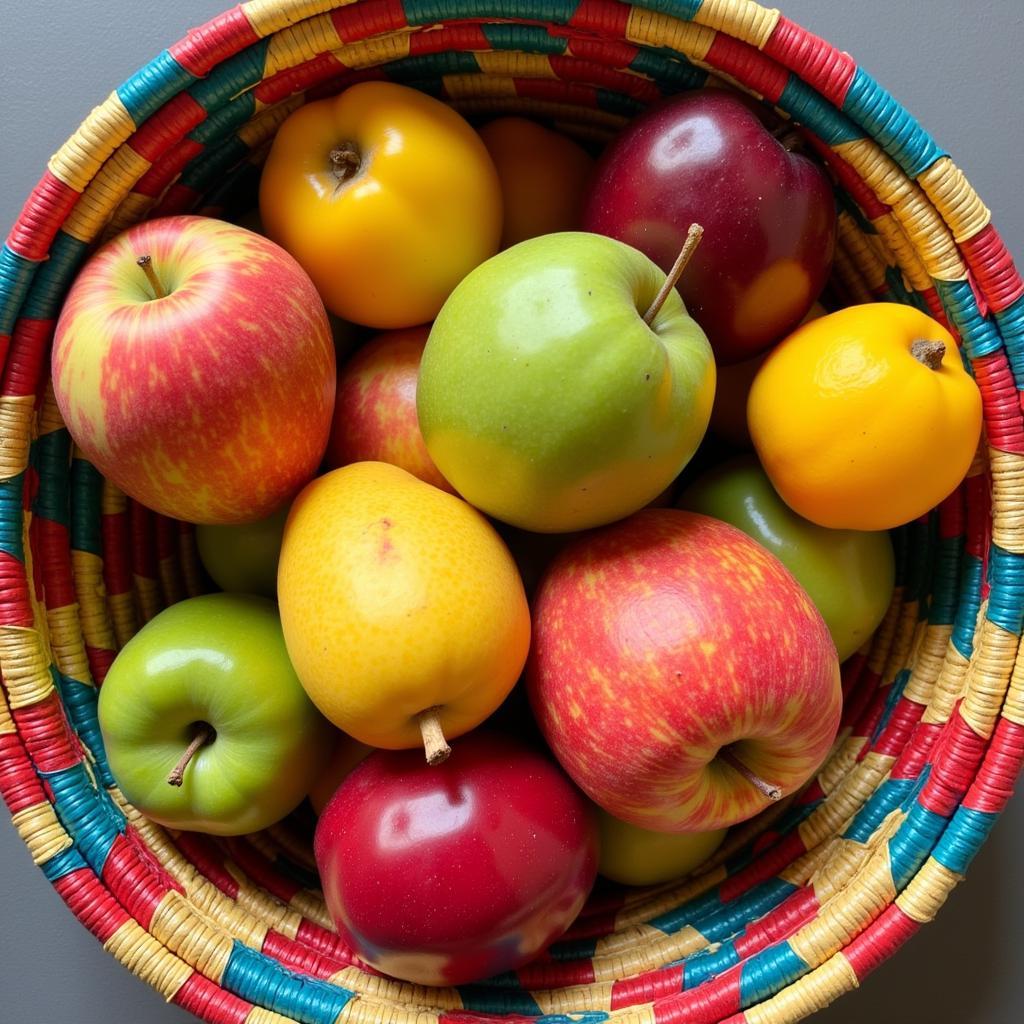Understanding African Grey Behaviour
The African Grey parrot, known for its striking grey plumage and remarkable intelligence, is a popular choice for bird lovers worldwide. However, owning an African Grey is a significant commitment. These complex creatures exhibit a range of behaviours that can be fascinating and challenging for their human companions. Understanding African Grey Behaviour is crucial to providing them with a happy, healthy, and enriching life.
 African Grey Parrot perched on a branch
African Grey Parrot perched on a branch
Decoding African Grey Body Language
African Greys might not speak human language, but they are masters of communication. They express themselves through an intricate tapestry of sounds, postures, and movements. Learning to interpret their body language can unlock a deeper understanding of their needs and emotions.
- Eye pinning: When an African Grey dilates and contracts its pupils rapidly, it’s called eye pinning. This often indicates excitement, fear, or aggression and is best observed with caution.
- Head bobbing: This can signify a desire for attention, a request for food, or a playful mood.
- Feather ruffling: This can be a sign of contentment, but it can also indicate illness if accompanied by other symptoms like lethargy or loss of appetite.
- Tail fanning: Often a sign of excitement or happiness, similar to how dogs wag their tails.
- Crested head feathers: A raised crest often indicates alertness, interest, or surprise.
Vocalizations: More Than Just Mimicry
African Greys are renowned for their exceptional ability to mimic human speech. However, their vocalizations extend far beyond mere repetition. They use a vast repertoire of whistles, clicks, chirps, and even growls to communicate a range of emotions and needs:
- Soft chirps and whistles: Often used to express contentment, communicate with flock mates, or request attention.
- Loud squawks and screams: Can signal alarm, fear, or a need for something, like food or water.
- Grumbling and muttering: Frequently heard during play or when the bird is talking to itself.
Understanding the context of these vocalizations, along with their accompanying body language, is key to deciphering your feathered friend’s messages.
Social Needs of an Intelligent Bird
African Greys are highly social creatures that crave interaction. In the wild, they live in large flocks with complex social structures. Therefore, providing ample social interaction is crucial for their well-being in captivity.
- Daily interaction: Dedicate time each day to play, talk, and interact with your African Grey.
- Environmental enrichment: Provide a stimulating environment with plenty of toys, branches to climb, and opportunities for foraging.
- Training and mental stimulation: Engage your parrot in training sessions using positive reinforcement techniques. Teach them tricks, play games, and offer puzzle toys to challenge their minds.
Addressing Behavioural Issues
Like all intelligent animals, African Greys can develop behavioural issues if their needs aren’t met. Common issues include feather plucking, screaming, and biting.
- Identify the root cause: Behavioural problems are often a symptom of an underlying issue like boredom, stress, or lack of social interaction.
- Consult an avian veterinarian: Rule out any medical causes for the behaviour.
- Positive reinforcement: Focus on rewarding positive behaviours instead of punishing negative ones.
- Patience and consistency: Changing established behaviours takes time and patience.
A Lifelong Bond of Companionship
Sharing your life with an African Grey can be an incredibly rewarding experience. These intelligent and affectionate creatures have the capacity to form deep bonds with their human companions. By understanding their unique behaviour, we can provide them with the care, enrichment, and companionship they need to thrive. Remember, a happy and stimulated African Grey is a joy to be around!
Frequently Asked Questions about African Grey Behaviour
1. Why does my African Grey bob its head?
Head bobbing can have several meanings, including a desire for attention, a request for food, or simply a sign of contentment. Observe your bird’s overall body language and the context to determine the specific message.
2. How can I stop my African Grey from screaming?
Screaming is often a sign of distress or a need for something. Instead of yelling back, try to identify and address the root cause of the screaming.
3. Do African Greys need to be in pairs?
While they are social birds, keeping African Greys in pairs requires careful consideration. It’s crucial to provide ample space, resources, and individual attention to prevent conflict and ensure the well-being of both birds.
4. Why does my African Grey pluck its feathers?
Feather plucking can be a complex issue with several potential causes, including boredom, stress, medical conditions, or dietary deficiencies. Consult an avian veterinarian to determine the underlying cause and develop a treatment plan.
5. How can I teach my African Grey to talk?
Start with simple words and phrases, using positive reinforcement techniques like treats and verbal praise. Be patient and consistent, as learning to talk takes time and effort.
For further assistance with your African Grey’s behaviour, please don’t hesitate to contact us. Our dedicated team is available 24/7 to answer your questions and provide guidance. Call us at +255768904061, email us at [email protected], or visit our office in Mbarali DC Mawindi, Kangaga, Tanzania.
You can also explore our other informative articles on African Grey parrots:
- Learn about the importance of african grey parrot socialising.
- Discover more about the fascinating world of the african flycatcher bird.
